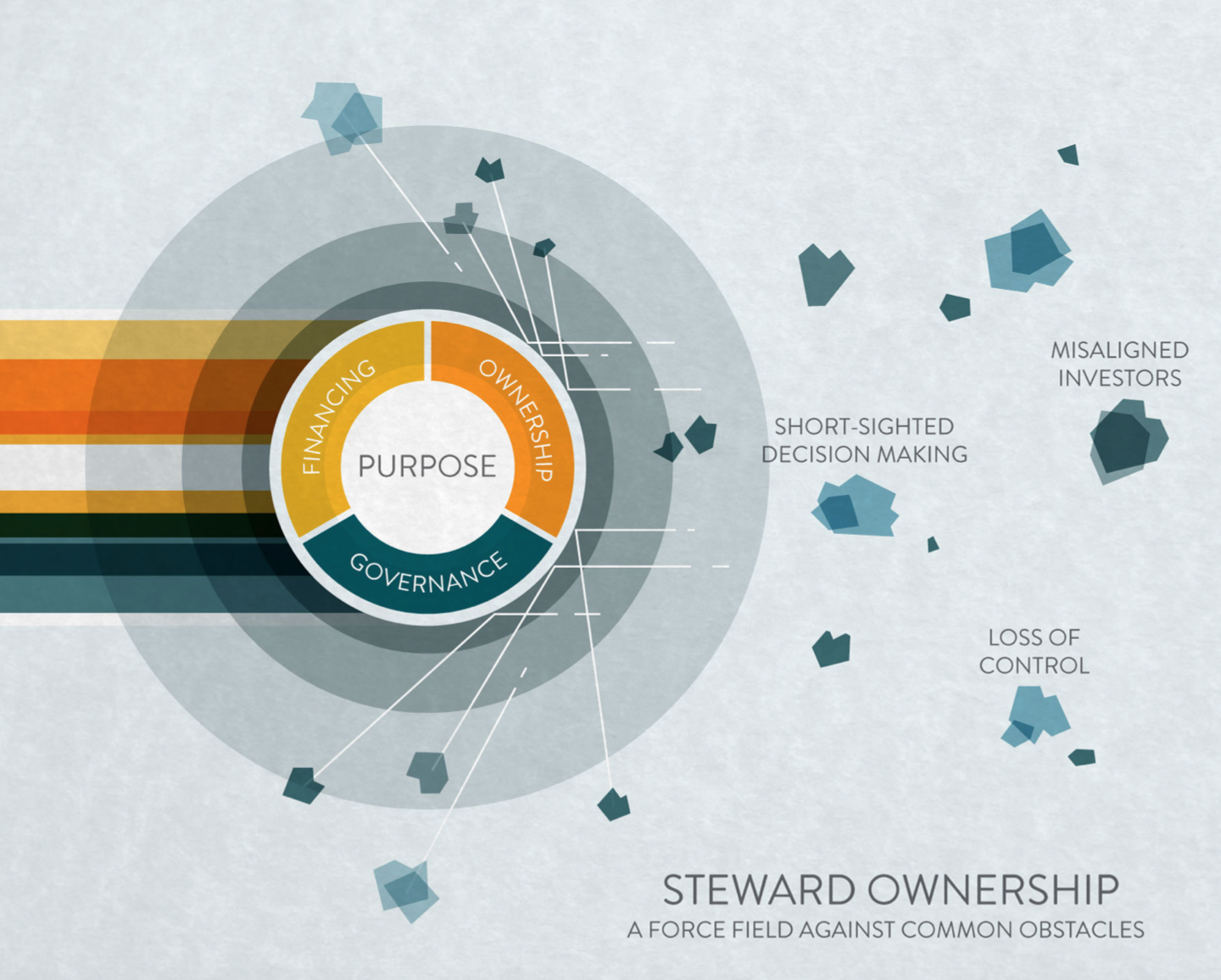PURPOSE WITH A CAPITAL P
These days, everyone is talking about purpose.
A quick Google search of “business purpose” returns 4 billion results (yes, billion - that’s not a typo). Results ranged from, “the power of purpose in business” to “building a purpose driven business” to “why purpose-led businesses outperform” and on, and on.
The Business Roundtable’s 2018 declaration on the purpose of corporations has been a flashpoint for lawyers, economists, and business leaders at large.
Then there’s the topic of purpose as it relates to individuals – of “life purpose.” Try Googling that - now we’re looking at 5 billion results!
With all this talk of “purpose” from so many different perspectives and dimensions, it's easy for meaning and clarity to become diluted.
So, when it comes to Steward Ownership and Perpetual Purpose Trusts, what do we mean when we talk about capital-P Purpose?
For a business to be trust-owned, it must exist for a purpose beyond generating wealth for shareholders. The “Purpose” of a trust-owned business is a legally binding statement of what the company seeks to benefit and/or protect over time, and the reason why the company is being placed into trust ownership. The stewards of the trust have a fiduciary duty – a legal responsibility – to ensure that the company is furthering the Purpose.
You can think of the Purpose as a compass for the future stewards of the Trust – their North Star.
The scope of purpose statements varies across organizations. For many trust-owned businesses, the trust’s Purpose is simply to enable the continuation of their current mission, values, and ways of operating. For others, it may be focused on providing benefits to a specific group of stakeholders, such as employees. And for others, it may be a larger, external vision that expands on what’s possible for the future of the enterprise. Take, for example, the Purpose Statement created when Organically Grown Company (our parent company) established the Sustainable Food & Agriculture Perpetual Purpose Trust:
“The purpose of the trust established by this Agreement is to support the efforts of independent, Values-Aligned organizations (including, but not limited to, the Company) that advance Sustainable Agricultural Practices and food systems.”
The Purpose Statement is not intended to replace or to override a company’s existing Vision, Mission and Values statements; it can be thought of more as an overarching umbrella under which they nest.
While many Purpose statements can be summarized in one sentence, what give them teeth are the Objectives that are legally codified in the Trust Agreement. They clearly define the specific ways that the company will advance their Purpose, and this creates the roadmap for the stewards and the operators of the company to follow. Here’s how Organically Grown Company codified their Trust Objectives:
Promoting engagement of Stakeholders in governance of the trust, the Company, or any other Values-Aligned business enterprise in which the trust holds a majority or controlling interest.
Operating the Company for the benefit of the Stakeholders rather than profit maximization and shareholder return, while acknowledging the necessity of financial and competitive security for the long-term viability of the enterprise.
Sharing the economic benefit of the Company with Stakeholders during the period of time that such Stakeholders are actively engaged in the business relationship, not upon exit or termination of the business relationship.
Supporting the continuous improvement and success of best practices in organic agriculture.
Supporting preservation and restoration of natural resources, ecosystems and biodiversity.
Reducing dependence on non-renewable resources extracted from the earth's crust and concentrations of substances produced by society.
Engaging in activities that mitigate climate change and restore or enhance beneficial practices that strive to reduce the concentration of greenhouse gases in the atmosphere.
Supporting operations or programs focused on eliminating or reducing the use of toxic and persistent synthetics.
Promoting equitable and diverse supply chains from farm to marketplace, including fair labor practices.
Promoting holistic food systems policies that restores health of people and the planet, through public education, transparency, and rigorous standards.
All of which begs the question: what’s the real difference between a purpose-driven business owned by an individual or group of shareholders, and a trust-owned business? Does embedding capital-P Purpose into a Trust Agreement really matter?
We’d argue that the answer is yes.
By aligning a company’s ownership structure (trust), governance structure (stewards at the helm of the purpose) and financing (disconnecting voting and economic rights) you can create a forcefield around your purpose, future-proofing your company for generations to come.


